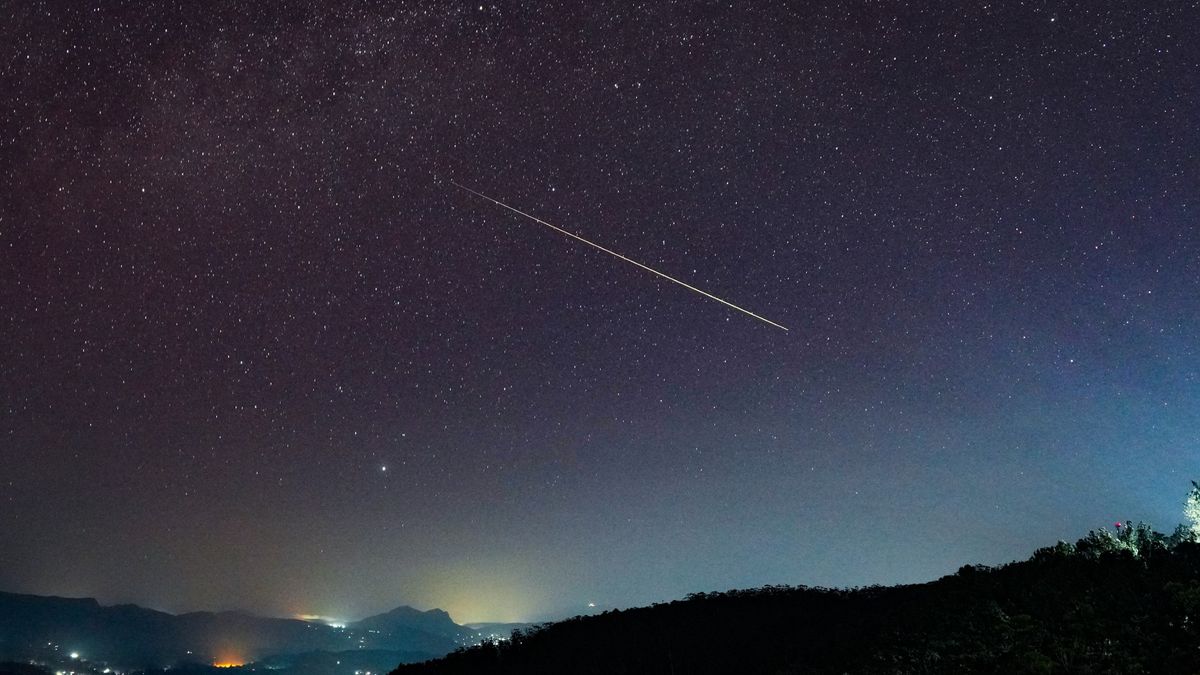Perseid Meteor Shower Peaks This Weekend: How to Catch Summer's Best 'Shooting Stars'

Every August, as many head off on summer holidays to destinations with dark skies, the most famous meteor shower graces our heavens: the Perseids.
This year, the Perseid meteor shower is expected to peak during the early hours of Monday morning (12 August), just after midnight. With a near-new moon, the sky will be exceptionally dark, creating ideal conditions for spotting and counting shooting stars. The first quarter moon sets around 11:20 pm BST, leaving a clear, dark sky for the rest of the night. Although some Perseids may be visible earlier in the evening, the shower is best observed from around 11 pm to dawn.
The pre-dawn hours are especially favoured for viewing because, at this time, our side of the Earth faces the incoming meteors directly, maximising the number visible.
If you're unable to get outside, you can watch the Perseid meteor shower online for free this weekend courtesy of astrophysicist Gianluca Masi of the Virtual Telescope Project. The first livestream will begin at 3 am BST on 12 August, with the second beginning at 3 am BST on 13 August, weather permitting.
For advice on photographing meteor showers, consult our guide on how to photograph meteors and meteor showers, and if you need imaging gear, check out our lists of the best cameras for astrophotography and best lenses for astrophotography.
Where to Look
During the early hours of the morning, the shower's radiant point (the apparent origin of the meteors) will be located between the Perseus constellation and the 'W' of Cassiopeia, steadily rising higher in the northeast sky. This means that meteors will flash across the entire sky at a rate of about one per minute or two (as seen by a single observer).
While ideal viewing requires a dark sky, even under moderate light pollution, the brightest Perseids will still be visible. These meteors are often described in astronomical journals as "bright and fragmenting" leaving persistent trails in their wake.
Lay Back, Relax, and Wait
No prior experience is needed to observe the Perseids. Simply find a location with a clear view of the sky and minimal light pollution. Dress warmly as it can get chilly even on summer nights, and lie back on a ground mat, sleeping bag, or a reclining lawn chair. Remember to cover exposed skin with insect repellent to avoid bites.
Be patient and allow your eyes time to adjust to the darkness. While Perseus is the shower's radiant point, the best viewing is generally towards the darkest part of the sky, usually straight overhead.
The Perseids are the ionization trails created by tiny debris from comet 109/P Swift-Tuttle, entering Earth's upper atmosphere at a staggering speed of 60 km per second. The Perseids were particularly spectacular in the early to mid-1990s, coinciding with Swift-Tuttle's most recent return in December 1992. Since then, the shower has returned to its normal intensity. The comet will not return until August 2126.
Startling Occurrences
However, surprises can always occur.
In the morning of 14 August 2021, the Perseids unexpectedly displayed a burst of meteors between 6:00 and 9:00 UT (2 to 5 am EDT). The cause of this outburst remains unknown but is likely due to an unidentified filament of comet debris shed by Swift-Tuttle during its passage through the inner solar system centuries ago.
According to <u>Central Bureau for Astronomical Telegrams Circular #5016</u>, the maximum zenithal hourly rate was estimated to be between 130 and 210, plus or minus 20. These figures are astonishing, given that rates typically decrease by 50% after the peak, and these rates were two to three times higher than the expected maximum on the night of 12-13 August 2021.
Four years from now could bring an exceptionally spectacular Perseid display. Some meteor experts predict that Earth will intersect with a dense clump of meteoric material shed by comet Swift-Tuttle during the 15th century, potentially producing a brief but intense display of hundreds of meteors per hour.
Defying Predictions
Even in years considered favourable for Perseid viewing, observers often report seeing only half or a third of the predicted number of meteors, while others see up to twice the number! It has been suggested that the Perseid particle stream, distributed along its orbital path around the sun, has a complex filamentary structure with gaps and dense areas.
Complicating matters further, some individuals appear to have better meteor-spotting eyes than others.
Regardless of local viewing conditions, the annual Perseids provide a compelling reason to head outdoors and gaze upwards at the night sky. Even if you see just a few "shooting stars", spotting a single, exceptionally bright meteor can make the experience worthwhile.
A final incentive is that next year, the moon will be at a waning gibbous phase just a few days past full, flooding the sky with bright light and obscuring all but the brightest Perseid streaks. So, make the most of the favourable conditions this year.
To one and all, we wish good luck and clear skies!
***
*Joe Rao serves as an instructor and guest lecturer at New York's <u>Hayden Planetarium</u>. He writes about astronomy for <u>Natural History magazine</u>, the <u>Farmers' Almanac</u>, and other publications.





